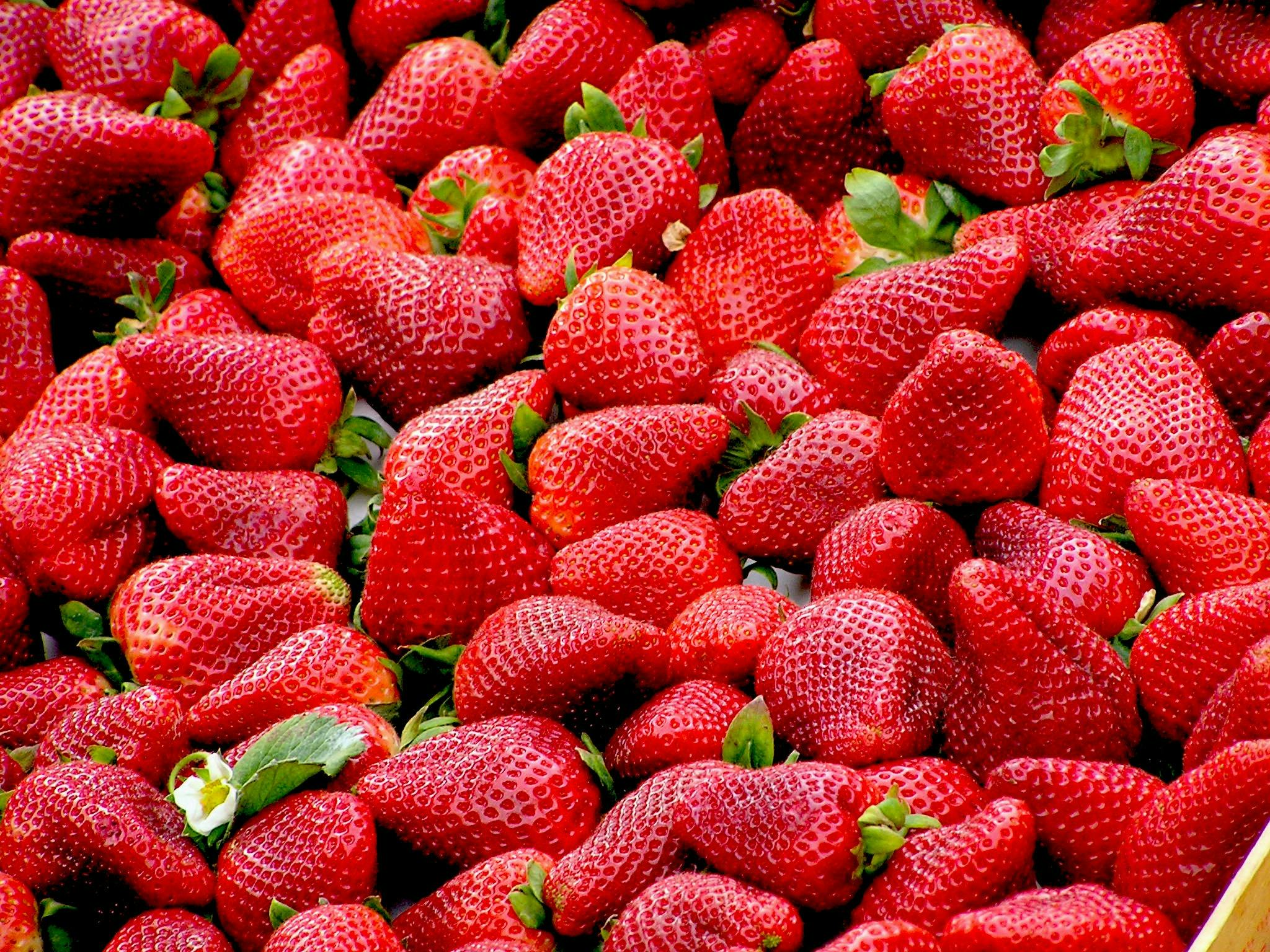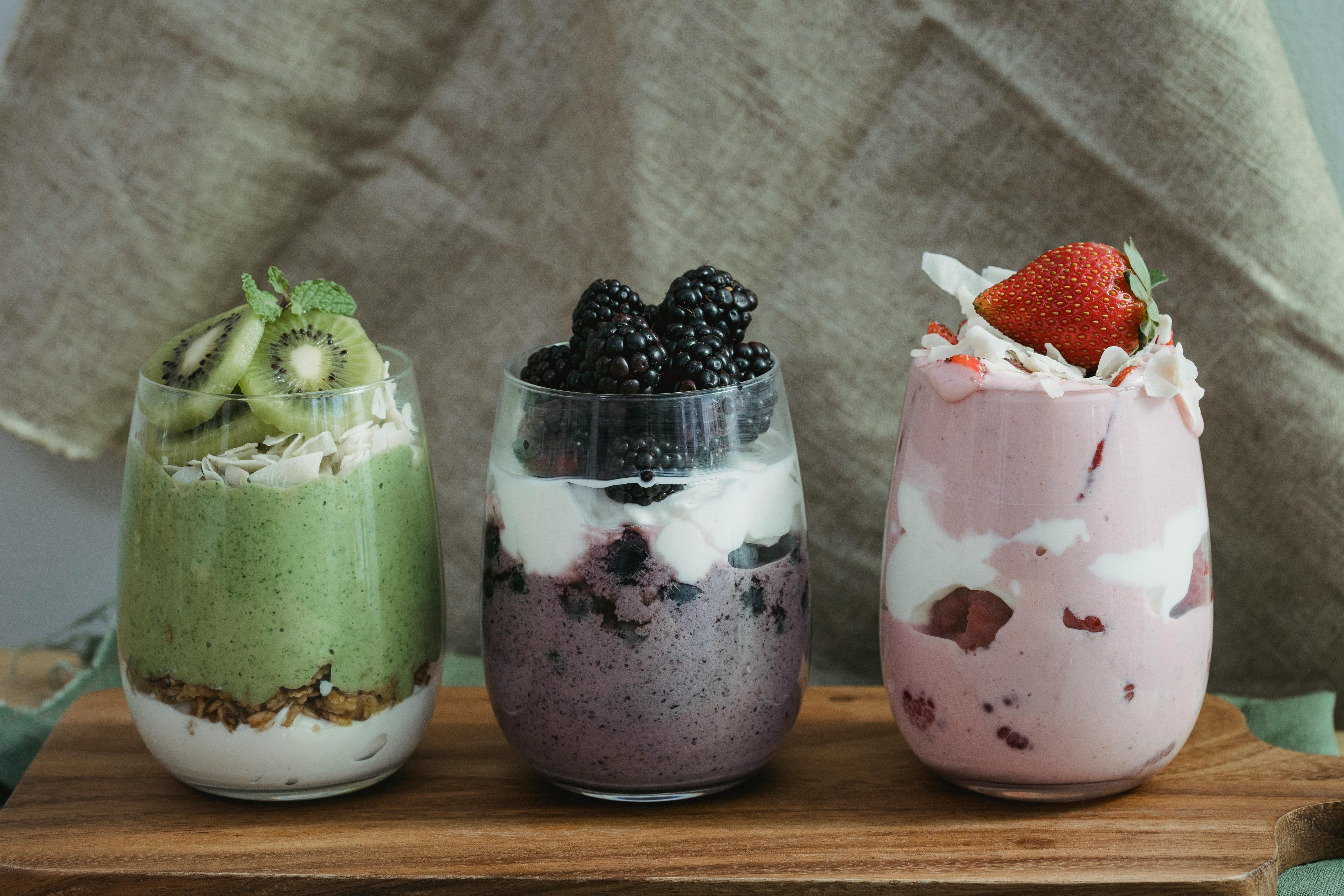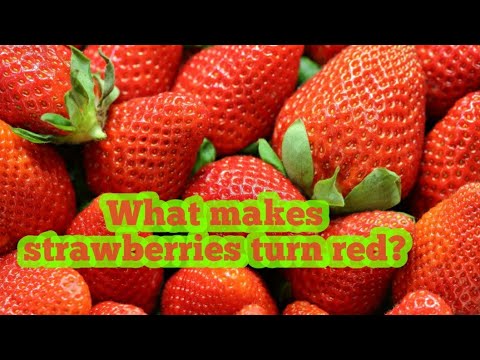Strawberries are a juicy and delicious fruit, and one of the most popular among people of all ages. But what makes strawberries so special is their bright red color. This vivid hue is not just for show – it’s actually due to a compound found in strawberries called anthocyanin. In this article, we’ll explore what exactly anthocyanin is and how it gives strawberries their signature red hue.Strawberries become red due to the presence of anthocyanins, which are a type of plant pigment. These pigments are found in a variety of plants and have a range of colors, including blue, purple, and red. In strawberries, the level of anthocyanins is what determines the color of the fruit. The more anthocyanins present in the strawberry, the more intense its color will be.
The Color of Strawberries
Strawberries are one of the most popular fruits in the world. Not only do they taste delicious, but they also have an appealing color that makes them a favorite among many people. The color of strawberries is one of the main reasons why they are so popular and sought after.
The color of strawberries is quite distinct and can vary slightly depending on the variety and ripeness of the fruit. Generally, ripe strawberries have a deep red hue that is similar to that of a tomato or bright cherry red. Some may be lighter or darker shades, but all will be some variation of red.
In addition to their hue, strawberries also have a glossy finish which gives them an attractive sheen. This sheen combined with their vivid color makes them look especially appetizing and inviting to eat. The combination of these two features gives strawberries their unique look which helps make them so recognizable and popular worldwide.
The vibrant color of strawberries is not just for aesthetic purposes; it has practical uses as well. Strawberries are packed with antioxidants which are beneficial for our health and can help reduce inflammation in our bodies. These same antioxidants are responsible for giving the fruit its rich red hue, so when you see bright red strawberries you know that you’re getting a good source of antioxidants.
So next time you’re looking for something tasty to eat or just want to enjoy the beauty of nature, be sure to check out some ripe, fresh strawberries! The deep red color is sure to please your eyes as well as your palate!
The Chemical Makeup of Strawberries
Strawberries are packed with nutrition and have a delicious flavour that is enjoyed around the world. But what is the chemical makeup of these popular fruits? Strawberries are made up of a variety of different compounds, including proteins, carbohydrates, lipids, vitamins, minerals and organic acids.
Proteins make up about 8-9% of a strawberry’s composition, and are essential for growth and development. They are composed of amino acids which help to build and repair cells in the body. Carbohydrates provide energy for the body and make up about 8-10% of a strawberry. These include simple sugars such as glucose and fructose, as well as other complex carbohydrates such as starch and dietary fibre.
Lipids make up about 1-2% of the total composition of a strawberry. Lipids are fatty acids that provide energy for the body and help to absorb fat-soluble vitamins such as vitamin A, D, E and K. Vitamins are essential for good health, and strawberries contain several B vitamins (thiamin, riboflavin, niacin) as well as vitamin C.
Minerals found in strawberries include calcium, magnesium, phosphorus, potassium and sodium. These minerals play an important role in maintaining healthy bones and teeth as well as helping to regulate fluid levels in the body. Organic acids found in strawberries include citric acid and malic acid which give them their characteristic tangy flavour.
Overall, strawberries are an incredibly nutritious fruit that can be enjoyed raw or used to add flavour to sweet or savoury dishes. The combination of proteins, carbohydrates, lipids, vitamins minerals and organic acids makes them an excellent source of nutrition that can be easily incorporated into any diet!
What Gives Strawberries their Red Color?
The red hue of strawberries is due to the presence of an antioxidant called anthocyanin. This pigment is found in many fruits and vegetables and is responsible for giving them their vibrant colors. Anthocyanins are a type of flavonoid, which are naturally occurring plant compounds that have both antioxidant and anti-inflammatory properties. In strawberries, anthocyanins are concentrated in the outer layers of the skin, which give it its deep red color. The amount of anthocyanin in a strawberry can vary depending on the variety, growing condition, and ripeness. For example, ripe strawberries tend to have higher levels of anthocyanin than unripe ones.
Apart from giving strawberries their beautiful color, anthocyanins also provide numerous health benefits. Studies have shown that consuming foods rich in anthocyanins can help reduce inflammation, improve blood flow and circulation, and protect against chronic diseases such as heart disease and cancer. Anthocyanins have also been linked to improved brain function and cognitive performance. So not only do they make strawberries look good but they also provide a number of health benefits!
How Fruits Produce Red Pigments
Fruits contain pigments that give them their red, orange, and yellow colors. These pigments are called carotenoids, and they are produced naturally by the fruit. Carotenoids are molecules that absorb light in the blue and green regions of the visible light spectrum and reflect or transmit light in the red region, which gives fruits their distinctive colors.
In order for a fruit to produce carotenoids, it must have certain enzymes present in its cells. The enzymes act as catalysts for the production of the carotenoid molecules. The enzymes also require certain nutrients from the soil in order to function properly. When these nutrients are not present, then carotenoid production is inhibited and the fruit does not have its characteristic red color.
Once the enzymes are present and functioning properly, then carotenoids can be produced by a process called photosynthesis. Photosynthesis is a process whereby carbon dioxide from the air is converted into sugar molecules using energy from sunlight. As part of this process, some of the sugar molecules are converted into carotenoid molecules which give fruits their red color.
The amount of carotenoid produced by a fruit depends on several factors such as variety, exposure to sunlight, watering levels, soil fertility, and other environmental conditions such as temperature and humidity. Different varieties of fruits will also produce different amounts of carotenoids depending on their genetic makeup.
In summary, fruits produce red pigments called carotenoids through a process of photosynthesis whereby carbon dioxide is converted into sugar molecules which are then converted into carotenoid molecules giving them their distinctive colors. The amount of carotenoid produced depends on several environmental conditions as well as genetic makeup of the fruit variety itself.

Why Do Strawberries Prefer to be Red?
Strawberries are one of nature’s most vibrant and flavorful fruits. They have a unique taste and eye-catching color that make them stand out from the rest of the produce in the grocery store. But why do strawberries prefer to be red?
The answer lies in their genetics. Strawberries are a type of berry that belongs to the Rosaceae family, which includes other red fruits like apples, cherries, and raspberries. This family of fruits is known for its bright red color, which is due to a compound called anthocyanin.
Anthocyanins are water-soluble pigments that give plants their vivid colors. In strawberries, anthocyanins act as a natural sunscreen, protecting them from UV radiation and other environmental stressors. For this reason, strawberries tend to stay redder when they’re exposed to direct sunlight.
The unique flavor of strawberries is also influenced by their color. As the fruit ripens and becomes redder, its sugar content increases as well. This results in a sweeter taste that’s favored by many people around the world.
In addition to their flavor and protective benefits, strawberries also contain valuable nutrients like vitamin C, fiber, potassium, manganese, and folate. These nutrients can help support overall health and wellbeing when consumed regularly as part of a balanced diet.
All in all, strawberries prefer to be red because it helps protect them from environmental stressors while also allowing them to develop a sweet flavor that’s enjoyed by many people worldwide. With their stunning color and tantalizing taste, it’s no wonder why this beloved fruit has become such an important part of our diets today.
The Role of Sunlight in Strawberry Coloration
Strawberries are a widely beloved fruit for their juicy texture and sweet flavor. But just as important to the enjoyment of this fruit is its attractive coloration, which ranges from deep red to neon pink. While the color of a strawberry may appear random, there is actually a scientific reason why it takes on the hue that it does. Sunlight plays an essential role in determining the coloration of a strawberry, as well as its size and flavor.
When exposed to direct sunlight, strawberries take on an orange-red hue, which is more intense than the pinkish-red color of those grown in shaded areas. This is because direct sunlight triggers the production of anthocyanins, which are responsible for giving strawberries their vibrant red color. Without adequate sunlight, strawberries will not produce an abundance of anthocyanins and will remain relatively pale in comparison to those grown in sunny conditions.
In addition to coloring the fruit, sunlight also affects its size and flavor. Strawberries grown with plenty of sunshine tend to be larger and sweeter than those grown in shaded areas. Sunlight helps to break down starch within the strawberry and convert it into sugar, resulting in a sweeter taste overall. Similarly, when exposed to direct sunlight, plants are able to produce larger fruits due to increased photosynthesis activity compared with those planted in shady spots.
In conclusion, sunlight is an essential component for producing vibrant strawberries with optimal size and flavor. Without sufficient exposure to direct sunlight, strawberries lack both deep coloration and desirable sweetness that make them so appealing as a snack or dessert item.
Nutrients Required for Strawberry Coloration
Strawberry coloration and quality is dependent on the nutrient availability of the soil. To ensure that your strawberries are bright and juicy, you need to provide the right nutrients. Nitrogen, phosphorus, and potassium are essential for optimal strawberry coloration. Nitrogen helps in producing more chlorophyll which in turn improves the overall color of the strawberry. Phosphorus helps to increase berry size and also provides a better sugar content making them sweeter. Potassium helps in improving disease resistance and also increases strawberry acidity which gives it a nice tangy flavor. Calcium is also important for good strawberry coloration as it helps to make the cell walls stronger and prevents cracking or splitting of berries.
In addition to these nutrients, magnesium helps promote good fruit development and quality. Magnesium also aids in photosynthesis which can lead to better berry coloration. Iron is necessary for healthy foliage growth which can help the plant absorb more sunlight, resulting in better berry production with deeper coloration. Zinc plays an important role in cell division during fruit development, helping produce a better size and shape of fruits with intense coloring.
Other micronutrients like manganese, copper, sulfur, cobalt, molybdenum are important for proper strawberry growth and development as well as their coloration. All these nutrients should be supplemented through soil fertilizers regularly to maintain optimal health of your strawberry plants and get beautiful-colored fruits every season!

Conclusion
Strawberries are red because of a combination of their genetics, the chloroplast pigments in their cells, and the presence of lycopene. Different varieties of strawberries can vary in color from pale yellow to deep red, depending on the amount of lycopene present. While lycopene is responsible for the bright red color of many strawberries, other compounds are also involved in creating the complex flavors that make this sweet fruit so popular. Strawberries are an important part of many diets and have numerous health benefits as well.
Overall, it is fascinating to consider all that goes into making a strawberry red and delicious! The science behind this colorful and nutritious fruit provides us with a deeper understanding and appreciation for all that nature has to offer.



